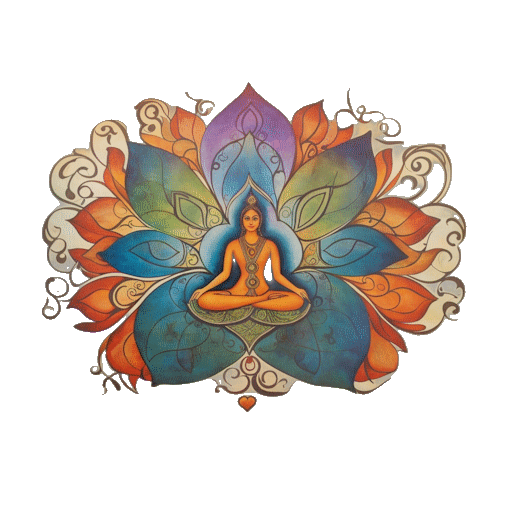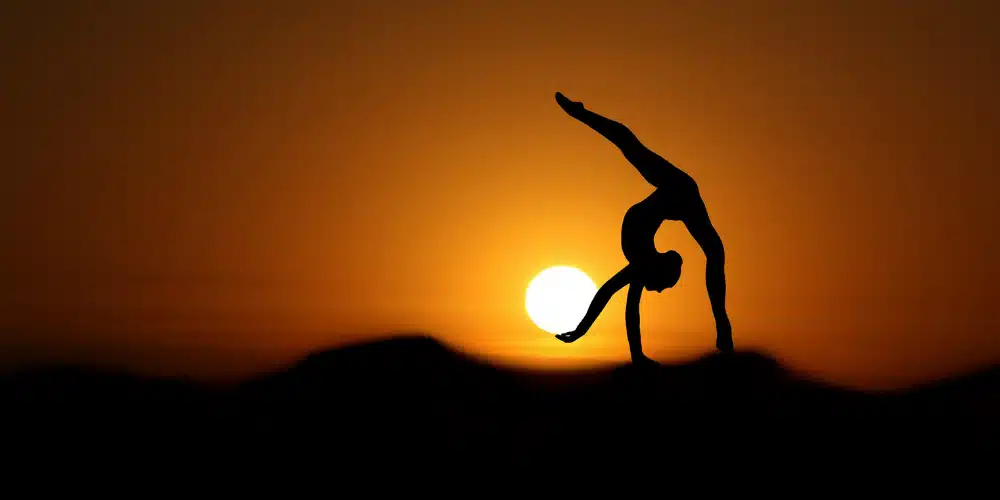In life, our health is closely linked to the energy known as prana. This energy is present in every breath we take and is vital to our well-being. As we explore health & fitness, we realize it’s more than just physical strength. It’s about aligning our movements and breath to enhance this energy. Whether it’s yoga, dance, martial arts, or team sports, each activity connects us to this energy. Let’s appreciate the connection between our physical health and the energy within us.
1. The Role of Yoga in Enhancing Prana
Yoga, an ancient practice with roots that stretch back thousands of years in India, is more than just a series of postures and stretches. It’s a holistic approach to well-being that intertwines the mind, body, and spirit. At the heart of yoga lies the concept of “prana” – the vital life force that energizes and sustains us.
Historically, yoga was developed as a means to achieve spiritual enlightenment. The sages of yore recognized that a healthy body was crucial for a focused mind and a radiant spirit. Through various asanas (poses), they sought to channel, balance, and amplify prana.
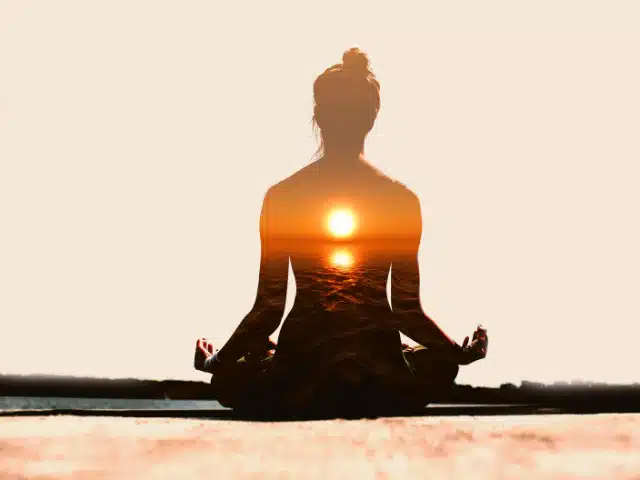
Different types of yoga offer varied approaches to harnessing prana:
Hatha Yoga
Often considered the foundation of all yoga styles, Hatha focuses on basic postures, breathing, and meditation. It’s a gentle introduction to the world of yoga, helping practitioners cultivate a steady flow of prana.
Kundalini Yoga
Dubbed the “yoga of awareness,” Kundalini aims to awaken the dormant energy at the base of the spine, sending it spiraling upwards through the body’s energy centers or chakras. This awakening can lead to profound spiritual experiences and a surge of prana.
Ashtanga Yoga
A more rigorous style, Ashtanga involves a specific sequence of postures synchronized with breath. This dynamic flow not only builds physical strength but also stokes the inner fires of prana.
Certain asanas are particularly potent in enhancing prana. For instance, the Sun Salutation sequence is revered for its ability to invigorate the body and boost energy levels. Poses like the Cobra or Bhujangasana open up the chest, facilitating a deeper intake of breath and, by extension, prana.
2. Pranayama: Breathing Life into Our Being
Breath, often taken for granted, is the very essence of life. Every inhalation brings with it a rush of prana, revitalizing our cells and rejuvenating our spirit. Pranayama, one of the pillars of yoga, delves deep into the art and science of breath control, offering techniques to harness and amplify this vital energy.
The term “Pranayama” is derived from two Sanskrit words: “Prana” meaning life force, and “Yama” meaning control. It’s a practice that goes beyond mere breathing exercises, aiming to balance and elevate our prana.
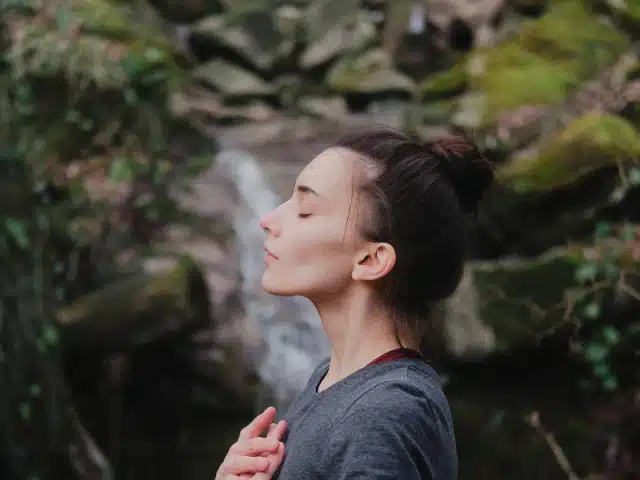
Here are some foundational Pranayama practices or techniques:
Anulom-Vilom (Alternate Nostril Breathing)
This technique involves inhaling through one nostril, holding the breath, and then exhaling through the other nostril. It’s a calming practice, known to balance the left and right hemispheres of the brain and enhance mental clarity.
Kapalbhati (Skull Shining Breath)
A more dynamic practice, Kapalbhati involves forceful exhalations followed by passive inhalations. It’s a powerful detoxifier, clearing out stale air from the lungs and charging the body with fresh prana.
Bhramari (Bee Breath)
This technique is named after the humming sound of bees. By exhaling with a humming sound, Bhramari calms the mind, reduces stress, and increases prana flow.
Modern science is now catching up with what yogis have known for millennia. Research suggests that controlled breathing can lower stress levels, improve cognitive function, and even boost the immune system. By influencing our breath, we’re directly tapping into the autonomic nervous system, bridging the gap between the conscious and the subconscious. Today, the rise of breathing apps further underscores this ancient practice, offering guided techniques to harness the breath’s potential in our digital age.
3. Modern Fitness Regimes and Prana
In today’s fast-paced world, fitness has evolved beyond traditional practices. Modern fitness regimes, while rooted in science and research, align beautifully with the age-old concept of prana. Each exercise, movement, or routine, when done mindfully, can be a conduit for enhancing our vital energy.
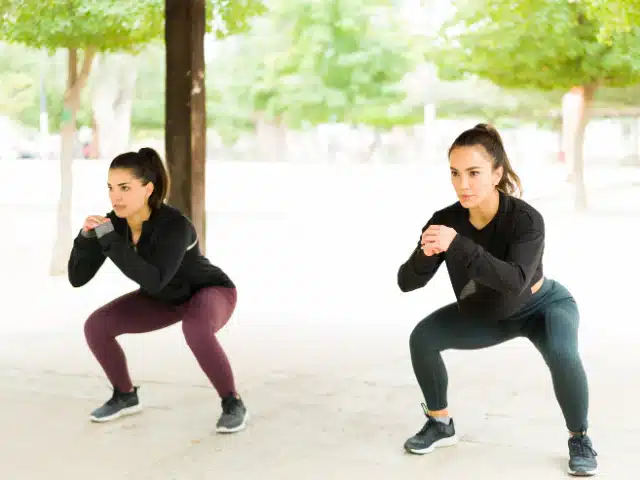
Aerobics
This rhythmic form of exercise, often set to music, is a fantastic way to get the heart pumping and the blood flowing. As we engage in aerobics, we enhance our cardiovascular health, allowing for a more efficient flow of prana throughout the body.
HIIT (High-Intensity Interval Training)
HIIT involves alternating between intense bursts of activity and periods of rest or lower intensity. This form of training not only torches calories but also creates an afterburn effect, known as the EPOC (Excess Post-exercise Oxygen Consumption). The result? A surge in prana, leaving us feeling energized long after the workout is over.
Strength Training
Lifting weights or using resistance bands helps in building muscle and improving bone density. But beyond the physical benefits, strength training can lead to a sustained boost in prana. As we push our limits, we tap into reservoirs of inner strength and vitality.
Flexibility and Balance
Practices like Pilates emphasize controlled movements, core strength, and flexibility. Such exercises harmonize our prana, ensuring a balanced flow of energy without blockages or disruptions.
Mind-Muscle Connection
It’s not just about lifting weights or doing reps. Being mentally present during workouts, feeling each contraction and extension, can optimize the flow of prana. This connection ensures that we’re not just going through the motions but truly harnessing the benefits of each exercise.
Incorporating these modern fitness regimes into our daily routine can be transformative. It’s a dance of energy, where every jump, squat, or stretch becomes an opportunity to enhance our prana.
4. Martial Arts: Channeling Prana Through Movement
Martial arts, often perceived as mere combat techniques, are deeply philosophical practices that intertwine the body, mind, and spirit. Rooted in ancient traditions, these arts emphasize harmony, discipline, and the flow of energy or prana.
At the heart of many martial arts lies the concept of “chi” or “qi” in Chinese culture, which closely aligns with the idea of prana. It’s the life force that martial artists learn to harness, channel, and direct through their movements.
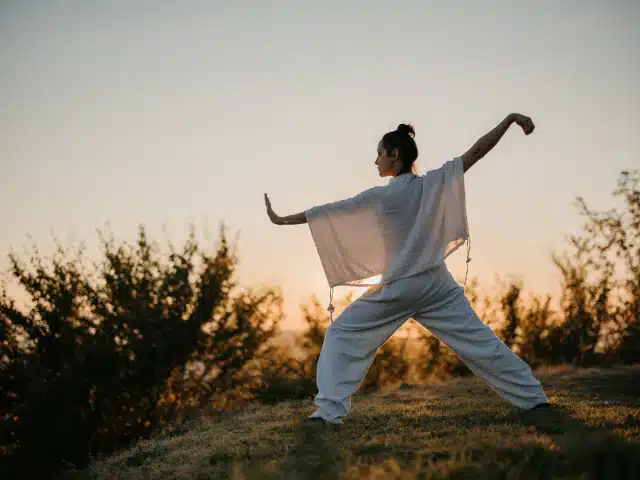
Tai Chi
Often described as “meditation in motion,” Tai Chi is a series of slow, deliberate movements that emphasize balance and fluidity. Practitioners learn to move with grace, channeling their chi and enhancing its flow. The gentle motions of Tai Chi not only improve physical health but also cultivate a calm, centered mind.
Qigong
This ancient Chinese practice combines movement, meditation, and breathwork. Qigong exercises are designed to cultivate and balance chi. By practicing regularly, one can clear energy blockages, enhance vitality, and achieve a state of harmony between the body and mind.
Karate, Taekwondo, and other combat-oriented arts
While these might seem aggressive on the surface, they’re deeply rooted in principles of discipline, respect, and self-control. Each punch, kick, or block is not just a physical act but a manifestation of the practitioner’s energy. By mastering these techniques, martial artists learn to direct their prana with precision and power.
Modern adaptations of these ancient arts, like kickboxing or mixed martial arts (MMA), while more combat-focused, still offer practitioners a way to connect with their inner energy. The rigorous training, discipline, and focus required in these arts can lead to a heightened awareness of one’s prana.
In essence, martial arts offer a unique blend of physical training and spiritual growth. Whether you’re practicing a kata in Karate or flowing through a Tai Chi sequence, you’re engaging in a dance of energy, channeling and directing your prana with intent and purpose.
5. Dance: The Rhythmic Flow of Prana
Dance, in its many forms and expressions, is a celebration of life, movement, and emotion. It’s a universal language that transcends boundaries and speaks directly to the soul. But beyond the joy and entertainment it brings, dance is a powerful medium to channel and enhance prana.
Historically, dance has held a sacred space in many cultures. It was not just a form of entertainment but a spiritual practice, a ritual, and a means to connect with the divine.

Sufi Whirling
This mesmerizing dance form, practiced by the Sufi dervishes, is a form of active meditation. As the dervishes whirl, they seek to achieve a state of spiritual ecstasy, where they feel one with the universe. The continuous spinning is believed to harmonize the inner flow of prana, aligning it with the cosmic rhythm.
Traditional African Dances
Rooted in community and spirituality, African dances are often performed during ceremonies, rituals, and celebrations. The rhythmic movements, combined with drum beats, create an energetic atmosphere, amplifying the collective prana of the community.
Ballet
This classical dance form, with its grace and discipline, requires immense control and precision. Every leap, pirouette, and pose is a testament to the dancer’s mastery over their body and, by extension, their prana.
Modern dance therapies have recognized the therapeutic benefits of dance. Moving the body freely, and expressing emotions through dance, can lead to emotional release, reducing stress and enhancing the flow of prana.
6. Nature and Prana: Outdoor Activities for Vitality
Nature, with its landscapes, rhythmic cycles, and serene beauty, has always been a source of rejuvenation for the human spirit. The fresh air, the rustling leaves, the gentle flow of a river – every element of nature resonates with prana, offering us a chance to reconnect with our vital energy.

Hiking
Trekking through forests, climbing mountains, or simply walking in a park can be a transformative experience. With every step, we ground ourselves, absorbing the Earth’s energy. The physical exertion, combined with the beauty of nature, enhances our prana, leaving us refreshed and invigorated.
Swimming
Water, in its many forms, is a powerful conductor of prana. Diving into a pool, a lake, or the ocean, we immerse ourselves in this element, allowing it to cleanse and recharge our energy. The rhythmic strokes and breath control involved in swimming further amplify this prana-enhancing experience.
Camping
Spending a night under the stars, away from the hustle and bustle of city life, can be a deeply spiritual experience. As we sit by a campfire, listening to the sounds of nature, we attune ourselves to its rhythm, harmonizing our prana with the universe.
Gardening
Planting seeds, tending to flowers, or simply getting our hands dirty in the soil connects us to the Earth. This act of creation, of nurturing life, is a beautiful way to enhance our prana. As we watch plants grow, we’re reminded of the cycles of life and the vital force that drives them.
Whether it’s a weekend getaway or a short walk in a nearby park, outdoor activities offer a sanctuary for our spirit. They remind us of the simple joys of life, the beauty of the present moment, and the endless flow of prana that surrounds us.
7. Sports and Team Activities: Collective Prana Health & Fitness
Sports, whether played in vast stadiums or local parks, are more than just games. They’re a testament to the human spirit, determination, and the joy of collective achievement. Beyond the physical benefits, sports and team activities offer a unique opportunity to amplify prana, not just individually, but as a collective.

Team Sports like Soccer, Basketball, and Volleyball
The synergy of a team, where players work in unison, creates an energy field that’s palpable. Every pass, goal, or strategy is a dance of prana, where individual energies merge to create a collective force.
Martial Arts Competitions
While martial arts are often seen as individual practices, competitions bring a sense of camaraderie. The respect between opponents, the discipline, and the focus all contribute to a harmonious flow of prana.
Relay Races
The baton passed between runners symbolizes more than just a transition; it’s a transfer of energy, of prana. The collective goal of the team amplifies this energy, driving each runner to give their best.
Mind Sports like Chess and eSports
While physically less demanding, these games require immense mental focus and strategy. The concentration, the anticipation, and the thrill of victory or the lessons from defeat all play a role in shaping the prana of the participants.
Group Activities like Dance or Music Ensembles
Moving in harmony, whether to a rhythm or a melody, groups engaged in dance or music create a symphony of prana. The collective joy, the synchronization, and the shared purpose enhance the overall energy of the group.
Engaging in sports and team activities teaches us valuable life lessons – teamwork, resilience, and the pursuit of excellence. But on a deeper level, they offer a chance to experience prana in its most vibrant form. The cheers of a crowd, the camaraderie of teammates, and the thrill of the game all contribute to an environment where prana thrives, reminding us of the beauty of shared experiences and collective endeavors.
8. Rest and Recovery: Replenishing Prana
In our quest for physical wellness and vitality, it’s easy to overlook the importance of rest and recovery. Yet, just as exertion enhances prana, so does relaxation. It’s during these moments of stillness and repose that our bodies and minds rejuvenate, replenishing the vital energy expended during activity.

Sleep
Often termed as the best meditation, a good night’s sleep is paramount for prana restoration. As we drift into the realm of dreams, our bodies undergo repair, our minds process experiences, and our spirit rejuvenates. The deep, restorative stages of sleep are when our prana reservoirs are refilled, preparing us for a new day.
Meditation and Mindfulness
Taking a few moments each day to sit in silence, focusing on our breath or a mantra, can be profoundly rejuvenating. Meditation allows us to tap into our inner prana source, calming the mind and energizing the spirit.
Active Recovery
Activities like gentle yoga, tai chi, or a leisurely walk can aid in recovery. While they involve movement, they’re performed at a relaxed pace, allowing muscles to heal and prana to flow without obstruction.
Digital Detox
In our hyper-connected world, taking a break from screens – be it phones, computers, or TVs – can be a form of recovery. This digital detox allows our minds to rest, reducing mental fatigue and enhancing our overall prana.
Relaxation Techniques
Practices like deep breathing exercises, progressive muscle relaxation, or even a warm bath can help in unwinding. They ease physical tension and mental stress, paving the way for prana to flow freely.
Modern life, with its myriad demands, often pushes us to our limits. But it’s crucial to remember that rest is not a sign of weakness; it’s a vital component of a prana-rich life. By honoring our need for downtime, by listening to our bodies and minds, we ensure that our prana remains vibrant, and ready to fuel our next adventure.
Conclusion
The journey of understanding health and fitness from a “prana” perspective is both enlightening and empowering. It’s a reminder that our physical well-being is intrinsically linked to the vital energy that courses through us. Whether we’re striking a yoga pose, taking a deep breath, dancing to a rhythm, or simply resting, we’re constantly engaging with prana, shaping it, and being shaped by it.
In today’s world, where health often gets reduced to numbers – be it weight, reps, or calories – it’s essential to remember the qualitative aspect of well-being. It’s not just about how much we can lift or how fast we can run; it’s about how vibrant we feel, how harmoniously our energy flows, and how attuned we are to our inner prana.
By integrating ancient wisdom with modern practices, by listening to our bodies and honoring our spirit, we can lead a life rich in prana, a life of vitality, balance, and joy.
FAQ
How is prana related to health and fitness?
Prana is intrinsically linked to our well-being. Physical activities, when done mindfully, can enhance the flow of prana, leading to better health, vitality, and mental clarity.
Can I enhance my prana without traditional exercises?
Absolutely! Practices like meditation, deep breathing, and even spending time in nature can boost your prana. It’s all about being mindful and connected to your inner energy.
Are there specific foods that can boost prana?
Yes, certain foods, especially those that are fresh, organic, and prepared with love, can enhance prana. Ancient traditions like Ayurveda offer insights into foods that can boost vitality and energy.
How does rest contribute to prana?
Rest and recovery are essential for replenishing expended energy. Good sleep, relaxation techniques, and even digital detox can help in rejuvenating your prana.
I’m new to these concepts. Where should I start?
Begin with self-awareness. Listen to your body, explore different practices, and find what resonates with you. Whether it’s yoga, dance, or simply mindful breathing, each step you take will bring you closer to understanding and enhancing your prana.
Can I combine modern fitness regimes with traditional prana-enhancing practices?
Definitely! Combining modern exercises with traditional practices can offer a holistic approach to health, ensuring physical fitness and vibrant prana.
What’s the difference between prana and regular energy or stamina?
While stamina refers to physical endurance and the ability to sustain prolonged physical or mental effort, prana is a more holistic concept. It encompasses not just physical vitality but also mental clarity, emotional balance, and spiritual alignment.
How do team sports contribute to collective prana?
When individuals come together with a shared purpose, like in team sports, their individual energies merge, amplifying the overall prana. The synergy, camaraderie, and collective intent in team activities enhance the group’s overall vitality and spirit.
Are there any side effects of having low prana?
Low prana can manifest in various ways, including physical fatigue, mental fog, emotional imbalances, and a general feeling of disconnection from oneself and the surroundings.
How can I measure my prana levels?
While there’s no scientific instrument to measure prana, self-awareness is key. Observing your physical vitality, mental clarity, emotional state, and overall well-being can give insights into your prana levels.
Is prana similar to the concept of aura?
While both are related to energy, prana refers to the vital life force within an individual, whereas aura is the energy field that surrounds a person, often believed to reflect their spiritual or emotional state.
Do I need a guide or teacher to start prana-enhancing exercises?
While it’s beneficial to have a guide, especially when starting practices like yoga or meditation, many prana-enhancing activities can be self-taught. Listening to your body and intuition is crucial.
